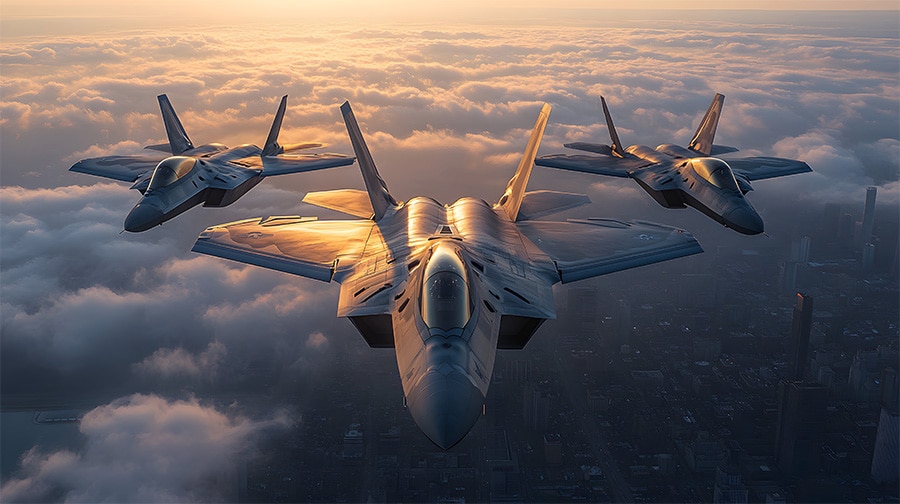Meeting the Challenges of Industrial Acceleration in Defense: A Strategic Equation for French Sovereignty
Originally published by the media Forbes, this article by Louis Catala, Partner at EFESO Management Consultants, explores the urgent challenges facing France’s defense industry as it seeks to accelerate production in a shifting geopolitical landscape. With the Paris Air Show as a backdrop, it examines the gap between political ambition and industrial capability—highlighting the strategic importance of capital, skills, and organization in ensuring French sovereignty.



As the Paris Air Show approaches—a showcase of French ambitions and technological innovations—a strategic challenge emerges: scaling up industrial capacity to meet growing demand in the defense sector. The war in Ukraine escalating tensions in the Middle East, and mounting pressure on sovereignty budgets underscore a pressing need: turning political intentions into concrete production capabilities. The will is clear, but the industrial equation—balancing investment, skills, and organization—remains unsolved, stalling the path to an effective ramp-up.
A Clear Political Will, but an Industry Still Constrained
Production is already increasing. Orders for high-profile systems such as the Caesar artillery and the Rafale fighter jet are on the rise. However, these initial moves represent only the tip of the iceberg. The industrial base—particularly the SMEs and mid-sized companies (ETIs) that make up the defense subcontracting network—has not yet been ‘stress-tested’ to match the stated ambitions. The oft-cited objective of doubling or even tripling output to meet wartime-level demand remains largely theoretical at this stage.
Several factors contribute to this lag. On one hand, government announcements are rarely followed by immediate operational structuring, especially in terms of firm orders and associated funding. Meanwhile, the defense industrial ecosystem is fragmented. Visibility into the subcontracting chain is limited, and key capabilities, particularly in rare skills or the manufacturing of complex parts, can quickly become bottlenecks.
The Triple Constraint: Capital, Skills, and Organization
The acceleration of production rates requires a structural transformation that few players can manage alone. Three major obstacles must be overcome: access to capital to finance investments, availability of technical skills, and the ability to scale up without destabilizing the production system.
Capital is the first hurdle, especially for SMEs and mid-sized companies. Investing in new production assets—such as CNC machines, complex machining centers, or expanded storage facilities—requires long-term commitment backed by solid order books. In a context of uncertainty, few are willing to take that risk alone. Co-investment solutions, industrial joint ventures, or targeted state support are becoming essential levers.
Human resources are the second challenge. Recruiting qualified profiles (specialized operators, electronics technicians, boilermakers, etc.) is already a major bottleneck. Sector growth cannot happen without a massive upskilling plan, supported by a more agile technical training policy that includes accelerated and job-specific learning paths.
Internal reorganization is also crucial. Increasing production rates cannot be limited to longer shifts or expanding existing lines. It requires redefining production flows, reducing cycle times, closer integration with suppliers, and implementing lean manufacturing methods tailored to the constraints of the defense industry.
Toward a Sovereign and Sustainable Industrial Strategy
Speed must not come at the expense of strategy. A successful ramp-up depends on building a long-term, sovereign industrial base. This involves a detailed mapping of current capabilities, identifying potential breakpoints in value chains, and strengthening coordination between major contractors and their subcontracting networks.
Public authorities have a key role to play, but it must go beyond placing orders. It should include methodological, financial, and HR support across the entire chain. Only under these conditions can the ramp-up become more than a series of isolated efforts, it can become a true shift toward a more robust, transparent, and sovereign production model.
Thinking of Industrial Acceleration as a Transformation Policy
The challenge facing the French defense industry is is not merely one of production; it is a broader industrial transformation. It exposes structural vulnerabilities, but also opens a unique window to reposition French industry for lasting sovereignty.
But this requires accepting the complexity of industrial timelines and committing resources that match the scale of the ambitions.